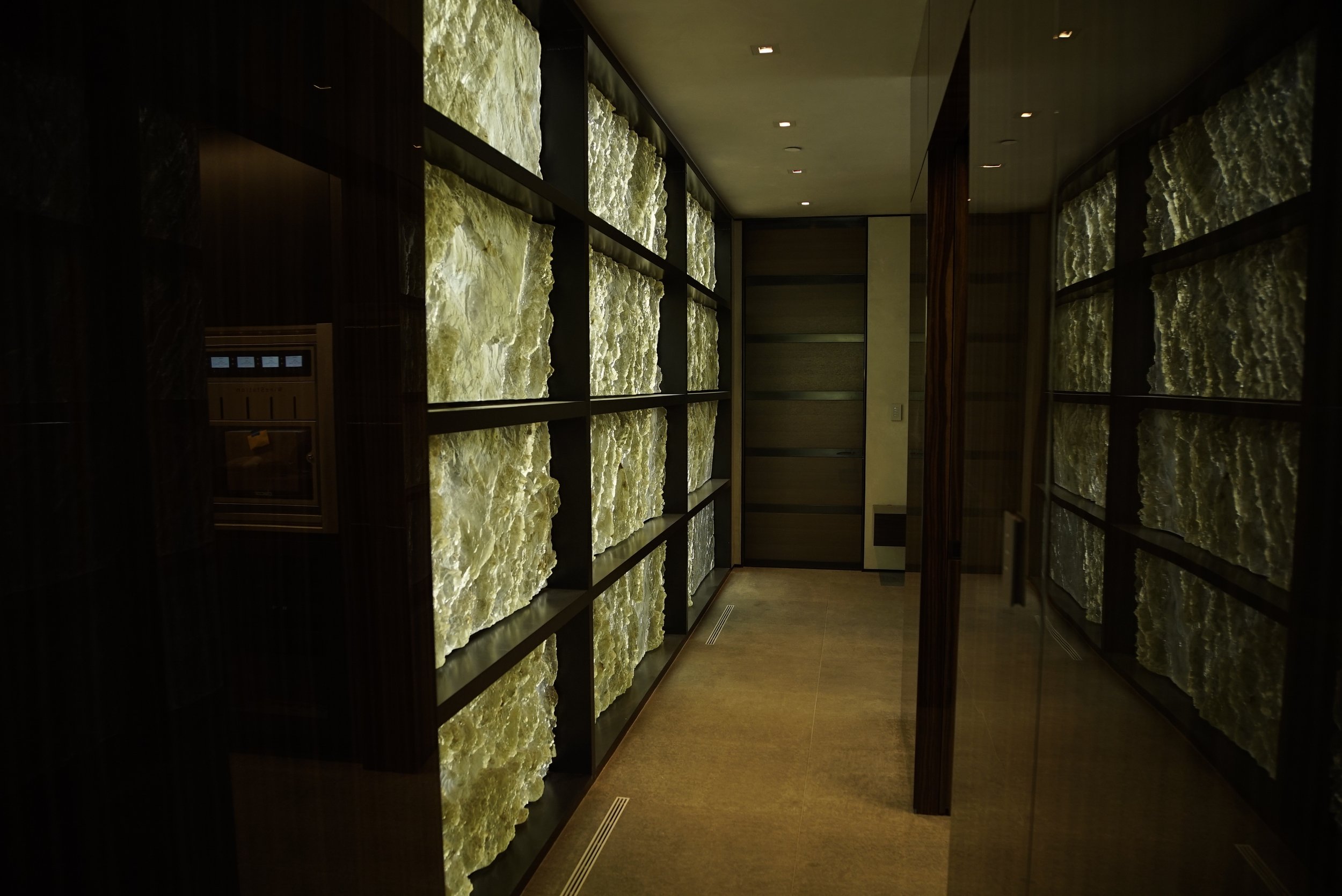Colorado Cascade
The Colorado Cascade mural is an architectural cast glass two story window that contains a series of thirty panels. These panels are mostly cast from a road cut near my studio plus areas of ice and rock from Antarctica. An arrow-like form comes from the upper left corner, and points to the center. These molds were from my American National Science Foundation, Antarctic Artists and Writers Program grant in 2006 for a project of taking rubber texture molds directly off the glacier ice and rock at Palmer Station, Antarctica.
Colorado Cascade Composite
2019
21 1/2' x 20'

Colorado Cascade
In 2015, clients came to me with a project for a ski villa in the Rocky Mountains of Colorado. The project as proposed was for a 7 meter by 7-meter cast glass window with patterns of geology as a theme. In 2006 I had been selected by the American national Science Foundation Antarctic Artists and Writers program for an expedition to Palmer Station, antarctica. I went there to take molds off the glacier ice and stone for use in future cast glass projects. For the Colorado Cascade, I combined those molds with patterns from locally sourced rock faces. Here in northern California, we have a huge chert and shale rock formation that has been thrust up by the collision of the North American and Pacific tectonic plates. This rock was formed in layers by tiny microorganism dropping their shells over millions of years. The sea bottom was compressed, subducted and uplifted to form the hills around my studio. A road cut revealed the patterns.
The window is in thirty panels about 180 x 60 cm with a maximum relief of about 10 cm. They are cast in a soft borosilicate glass that we melted and colored in the studio. To fit in the architectural frame, they were polished on the backs and laminated to thermo-pane windows so they could be snapped into a commercial window system.
The pattern is a combination of Antarctic rock and ice piercing layers of the local chert-and-shale. The pattern extends through the window in two stories of the house. The color is an earthy charcoal brown made with nickel and cobalt as coloring oxides. The color evokes the mountains and the minerals that have been mined nearby. The patterns hint at the geologic origin of the rocks. The whole piece has a time based theme where layers of time sequences play in the light. Standing in front of the window, you can feel the passage of the minutes as the glass patterns refract the moving sun and trees in the wind. Living with the window for years on end will reveal the changing light patterns of the year. The geology was formed over millions of years at the rate of perhaps a half million years per centimeter, being revealed by road cutting into he hillside decades ago. The earth has entirely changed its geologic face perhaps seven times in its three-billion-year history and the formation of the planet extends the time frame way beyond that. The glass itself is a kind of geologic creation, if human made. All these components coming together itself represents another layer of timing, as well. For me, making time visible as embodied in my window has been the most remarkable result of the process of creating it and points the way to future work.











